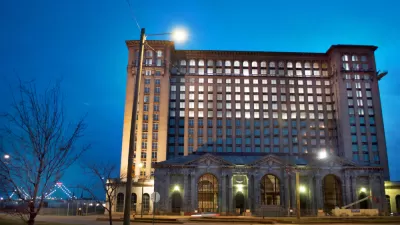From St. Louis to Baltimore, the Rustbelt Cities are seeing a growing population of millennials as a possible cure to shrinking populations and stagnating economies.

The millennial generations, those born starting in 1982, are being seen as potential saviors of the once formidable Rustbelt cities that have fallen on hard economic times as manufacturing and industrial jobs have disappeared. Tim Henderson, writing in Stateline, finds that the growing number of educated millennials moving to cities such as St. Louis, Pittsburgh, Buffalo and Grand Rapids, has given hope for some form of economic rebirth based on a transition to a high-tech, knowledge economy. One of the primary factors attracting this growth can be found in the affordable housing stock available in these cities.
The high cost of living in high-tech centers like Seattle and San Francisco has made them less attractive to many young people, [author Antoine van Agtmael] said. At the same time, affordable housing has helped new hot spots of innovation in Rust Belt cities to emerge.
...
Libby Francis said she came to Baltimore from the District of Columbia looking for urban life at a lower cost in her mid-30s, about 10 years ago.
“I was a single adult chasing the dream of homeownership and I’m not made of money. It was getting pretty depressing,” Francis said. In Hampden she found a house for $110,000 and the financial freedom to open a locally sourced flower shop. “You can actually be an artist here and pay the rent.”
Cities such as Pittsburgh have also invested in amenities that might attract new "fast-growth" businesses, including new public spaces and apartments in the city's downtown.
FULL STORY: Millennials Bring New Life to Some Rust Belt Cities

Maui's Vacation Rental Debate Turns Ugly
Verbal attacks, misinformation campaigns and fistfights plague a high-stakes debate to convert thousands of vacation rentals into long-term housing.

Planetizen Federal Action Tracker
A weekly monitor of how Trump’s orders and actions are impacting planners and planning in America.

In Urban Planning, AI Prompting Could be the New Design Thinking
Creativity has long been key to great urban design. What if we see AI as our new creative partner?

King County Supportive Housing Program Offers Hope for Unhoused Residents
The county is taking a ‘Housing First’ approach that prioritizes getting people into housing, then offering wraparound supportive services.

Researchers Use AI to Get Clearer Picture of US Housing
Analysts are using artificial intelligence to supercharge their research by allowing them to comb through data faster. Though these AI tools can be error prone, they save time and housing researchers are optimistic about the future.

Making Shared Micromobility More Inclusive
Cities and shared mobility system operators can do more to include people with disabilities in planning and operations, per a new report.
Urban Design for Planners 1: Software Tools
This six-course series explores essential urban design concepts using open source software and equips planners with the tools they need to participate fully in the urban design process.
Planning for Universal Design
Learn the tools for implementing Universal Design in planning regulations.
planning NEXT
Appalachian Highlands Housing Partners
Gallatin County Department of Planning & Community Development
Mpact (founded as Rail~Volution)
City of Camden Redevelopment Agency
City of Astoria
City of Portland
City of Laramie





























